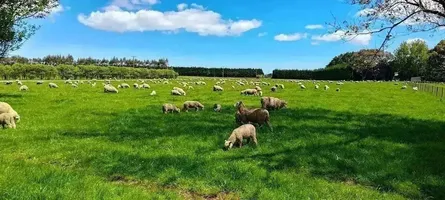
Why Good Soil Info Matters for Kiwi Farmers
For farmers in New Zealand, making smart decisions about soil use can mean the difference between thriving and struggling. The problem? Many farmers rely on outdated soil information or just what they can observe firsthand. While local knowledge is incredibly valuable, it’s often not enough for the challenges modern farming brings. Reliable, detailed soil information could be a game-changer for farm planning, decision-making, and improving sustainability.
Local Knowledge vs. Modern Needs
Farmers naturally learn a lot about their soils over time. This knowledge comes from years of experience, trial and error, and getting to know the land. However, local knowledge has its limits. New management practices or land uses bring unknowns. That’s where more precise soil data can help.
Modern farming needs precise, science-backed information. This includes understanding soil variations within a paddock, knowing what each part of the farm can handle, and being able to predict how changes might impact production. Soil data is also important for dealing with new regulations and markets that want proof of sustainable practices.
Soil Data Helps Drive Decisions
Good soil information has many uses. It can help in deciding how to best use a piece of land, whether for buying, developing, or managing it. It also helps in precision farming—using inputs like water and nutrients exactly where and when they are needed. In turn, this reduces waste and helps protect the environment.
Having reliable soil data makes it easier to talk to consultants, get approvals for farm activities, and show compliance with environmental standards. It’s a practical tool that adds value beyond what can be seen by walking the farm.
Farm Planning and Profit
Soil data allows farmers to set realistic production goals based on what their land can handle. It helps identify which soils are vulnerable and need careful management to reduce risks like erosion. The ultimate goal is to get the best production possible while staying sustainable.
In the long run, investing in better soil information can pay off financially. While getting detailed soil data might sound expensive, studies show that it often pays for itself by preventing costly mistakes and boosting productivity.
What’s the Solution?
Other countries have invested in nationwide soil surveys to support farmers. The paper suggests that for New Zealand, a similar approach could be worth it. It would cost about NZD $280 million to get soil data at the right detail level, which is just a small fraction of the value agriculture brings to the economy each year. This investment would give farmers the tools they need to make better decisions and improve the sustainability of their operations.
Making Soil Data Useful
But it’s not just about collecting data. Farmers need to see how this information can work for them, to make their jobs easier and more profitable. Extension programmes—like field days or local examples of how using soil data improves outcomes—can help bridge this gap.
Conclusion
Knowing your soils in detail isn’t just a nice-to-have—it’s becoming a necessity in today’s farming environment. Whether it’s buying land, planning for the future, or adjusting to new rules and market demands, detailed soil information helps farmers stay ahead. Investing in good soil data will help New Zealand farmers make better decisions, boost productivity, and take care of the environment all at once.



